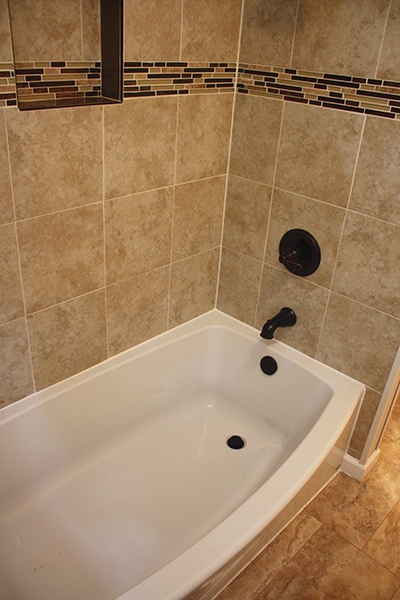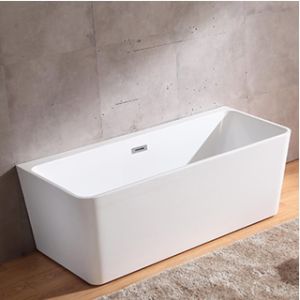Right here down the page you can discover some extremely good details with regards to How to Install a Bathtub.

Installing a tub isn't exactly brain surgery, but it does require strong plumbing, carpentry, as well as often, tiling abilities. Changing an old bath tub with a brand-new one is additionally a reasonably difficult project. If the old bathtub is conveniently accessible, the task can relocate easily; if you need to open up a wall to remove the old bathtub as well as position the new bath tub, the task is much harder. In either instance, the job is within a home handyman's abilities, although you will require a helper to vacate the old tub and set in the brand-new one. See to it you have certified yourself for the work and fit trying it. Instead of working with a specialist to take control of a halfway-completed project, it is much better to take into consideration utilizing one before you start. Chances are you might need a professional plumber to make tube links.
This short article will certainly aid you install a new bathtub in your bathroom if you have actually currently acquired a new tub as well as don't need to change the arrangement of your previous water system pipes.
Your tools and material list need to consist of the following:
Removing Old Touches
If you need to replace old faucets with new ones as a part of your installment, then the first thing you need to do is detach the water supply. After doing so, activate the taps to drain pipes any kind of water staying in the system. The procedure of removing the existing faucets can be fairly troublesome as a result of the restricted gain access to that is often the situation.
Use a container wrench (crowsfoot spanner) or a tap tool to reverse the nut that links the supply pipelines to the taps. Have a towel ready for the remaining water that will come from the pipelines. Once the supply pipes have actually been eliminated, use the same tool to loosen the nut that holds the taps onto the bath/basin. You will require to quit the solitary taps from turning during this procedure. As soon as the taps have been removed, the holes in the bath/basin will certainly need to be cleaned up of any old sealing substance.
Before moving on to fit the brand-new taps, compare the pipeline connections on the old faucets to the new faucets. If the old taps are longer than the brand-new taps, after that a shank adapter is required for the brand-new taps to fit.
Fitting New Touches
If the tails of the new faucets are plastic, then you will require a plastic connector to stop damage to the thread. One end of the adapter fits on the plastic tail of the tap as well as the various other end provides a link to the current supply pipelines.
If you need to fit a monobloc, then you will need decreasing couplers, which connects the 10mm pipe of the monobloc to the typical 15mm supply pipe.
Next, place the faucet in the installing opening in the bath/basin making sure that the washers are in location in between the faucet as well as the sink. Safeguard the faucet in position with the producer provided backnut. As soon as the tap is securely in position, the supply pipes can be attached to the tails of the taps. The faucets can either be connected by utilizing corrugated copper piping or with normal faucet adapters. The former kind ought to be attached to the tap ends initially, tightening only by hand. The supply pipelines can later on be connected to the various other end. Tighten up both ends with a spanner after both ends have been connected.
Setting up the Bath tub
Using the two wooden boards under its feet, put the bath tub in the called for position. The wooden boards are valuable in uniformly spreading out the weight of the bath tub over the location of the boards as opposed to concentrating all the weight onto 4 tiny points.
The following objective is to make certain that the bath tub is leveled all round. This can be achieved by checking the level as well as adjusting the feet on the bath tub up until the level reviews degree.
To mount taps, fit the bottom of the outermost flexible tap port to the ideal supply pipe by making a compression join; after that do the exact same for the other faucet.
Turn on the supply of water and also inspect all joints and brand-new pipework for leakages as well as tighten them if essential. Fill up the bath tub and additionally check the overflow outlet and also the normal electrical outlet for leakages.
Finally, take care of the bathroom paneling as described in the producer's user's manual. Tiling and also sealing around the bathtub must wait till the bath tub has been used a minimum of when as this will certainly resolve it right into its last placement.
Planning for the Installment
To start with, the sustaining structure provided with the bathroom must be fitted (if needed) according to the supplier's guidelines. Next off, fit the faucets or mixer to the bath tub. When fitting the faucet block, it is important to ensure that if the tap includes a plastic washing machine, it is fitted in between the bath and the taps. On a plastic bath, it is likewise sensible to fit a supporting plate under the faucets system to prevent strain on the bath tub.
Fit the adaptable tap adapters to the bottom of the two faucets using 2 nuts as well as olives (in some cases provided with the tub). Fit the plug-hole outlet by smearing mastic filler round the sink electrical outlet hole, and after that pass the electrical outlet through the hole in the bath. Utilize the nut provided by the manufacturer to fit the plug-hole. Analyze the plug-hole electrical outlet for an inlet on the side for the overflow pipeline.
Next off, fit completion of the flexible overflow pipe to the overflow outlet. After that, screw the pipe to the overflow face which ought to be fitted inside the bath. Ensure you utilize all of the supplied washers.
Connect the catch to the bottom of the waste electrical outlet on the bath tub by winding the string of the waste outlet with silicone mastic or PTFE tape, and screw on the trap to the electrical outlet. Link the bottom of the overflow tube in a similar manner.The bathroom must now prepare to be suited its final setting.
Tiling Around the Bath tub
In the location where the bath fulfills the floor tile, it is needed to seal the joins with a silicone rubber caulking. This is very important as the fitting can move enough to fracture an inflexible seal, creating the water to pass through the wall surface between the bath and the tiling, resulting in issues with dampness as well as possible leakages to the ceiling listed below.
You can select from a selection of coloured sealers to blend in your fixtures as well as installations. They are marketed in tubes and also cartridges, and are capable of sealing spaces as much as a size of 3mm (1/8 inch). If you have a bigger space to fill up, you can load it with twists of soaked newspaper or soft rope. Keep in mind to always fill the bathtub with water before sealing, to allow for the activity experienced when the bathtub remains in use. The sealant can crack rather very early if you do not take into consideration this motion before securing.
Conversely, ceramic coving or quadrant ceramic tiles can be utilized to border the bathroom or shower tray. Plastic strips of coving, which are easy to use and reduce to size, are additionally quickly available on the marketplace. It is recommended to fit the floor tiles utilizing water-resistant or water-proof glue and cement.
Bathtub Installation
How Important Is A Bathtub To Your Home?
High-quality baths, showers, and other bathroom updates are necessary when considering a smart investment in your home. It’s a room that you go to every day and one that is constantly being used by guests.The bathroom is one of the top trafficked rooms in a home and also one of the most valuable in terms of home resale.
Install Piping Before Tub
You will be using your existing drain and waste vent system, but pipes required include the hot and cold water supply lines and a pipe leading to a shower head. A mixing valve and shower head are also needed. Air chambers may be required.
Position the Tub
Lower the tub into place so that the continuous flange fits against the wall studs and rests on 1’x4' or 2’x4' supports. Anchor the tub to the enclosure with nails or screws inserted through the flanges into the studs.
NOTE: Remember, bathtubs and shower stalls may require support framing. A bathtub filled with water is extremely heavy, so check building codes and framing support before installing the tub.
Assemble Drain Connections
Assemble the bathtub drain connections by connecting the tub overflow with the tub drain above the trap, not beyond it. The trap will have a compression fitting that screws over the arm of the overflow assembly.
Place a Pipe For the Shower Head
First, locate a brass female threaded winged fitting and attach it to a framing support via a screw or a nail. Then run a pipe up the wall for the shower head. Sweat or solder the other side of the brass fitting to the top of the pipe.
Attaching Hot and Cold Water Lines
Attach your water lines for both hot and cold by sweating these directly into the hot and cold ports of the mixing valve. The mixing valve will be how water enters the tub’s system, not by the pipes themselves.
Install the Spout
Extend a piece of 1/2 inch pipe, or whichever length is specified in the manufacturer’s instructions, for the tub spout. Sweat on a male threaded fitting at the end of the pipe or use a brass nipple of the proper length and a 1/2 inch cap.
NOTE: At this point you should have your rough-in plumbing work inspected before proceeding further.
Check For Leaks
Restore the water pressure and check the drain connection and the supply pipes for any sign of leaking.
estore the Bathroom Wall
Replace the wall with moisture-resistant drywall as a base for your wall covering. Seal the joints between the wall and your new tub with silicone caulk as protection against water seepage.
https://www.berkeys.com/2016/12/02/bathtub-installation-dallas/

I hope you enjoyed our article on Installing A Bathtub. Thanks for taking the time to read through our blog post. Are you aware of another individual who is interested in the topic? Take a moment to promote it. I cherish reading our article about How to Install a Bathtub Yourself.
This Website